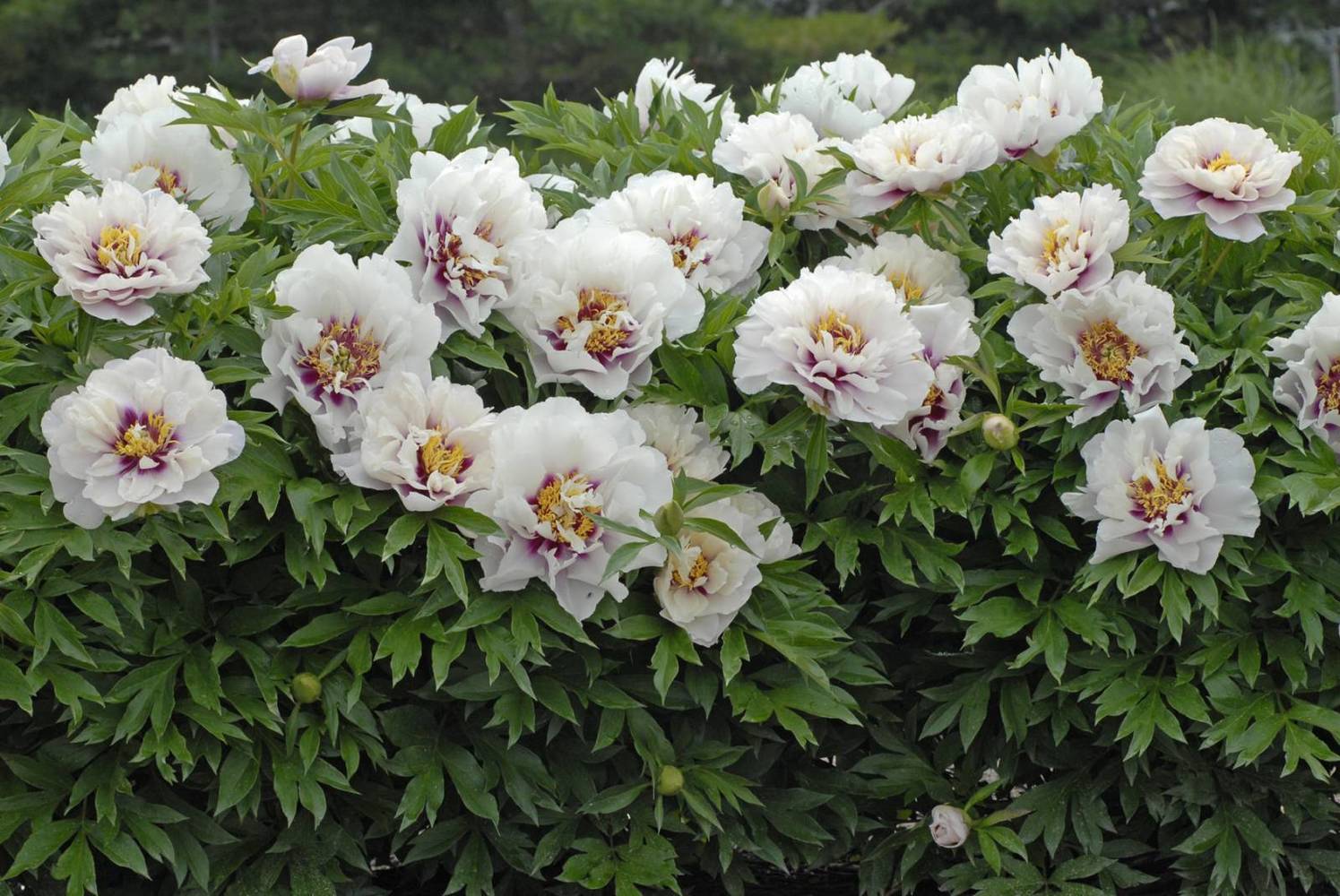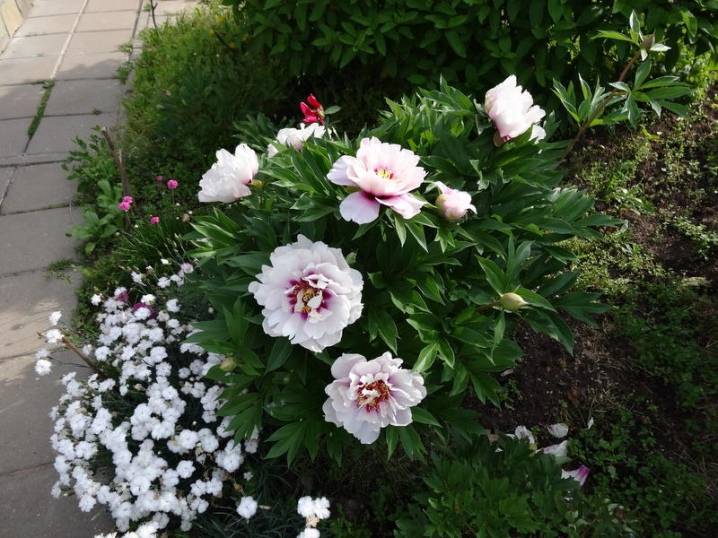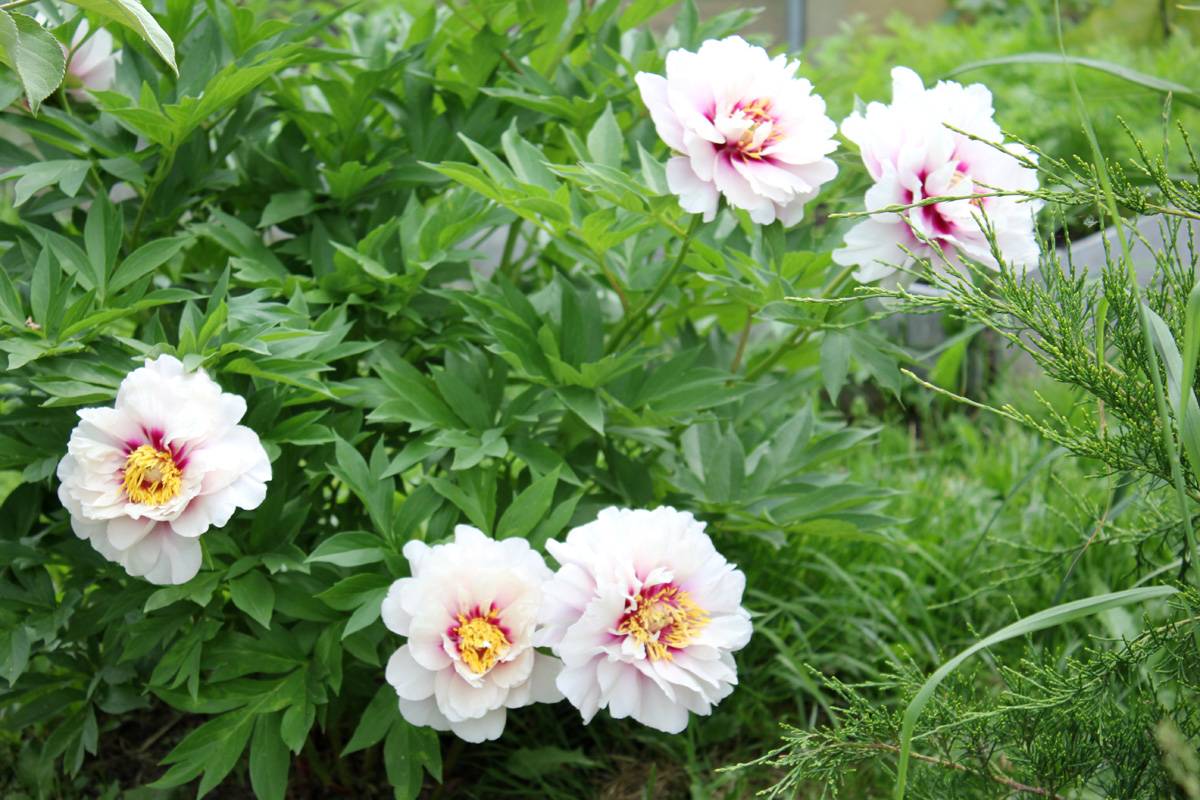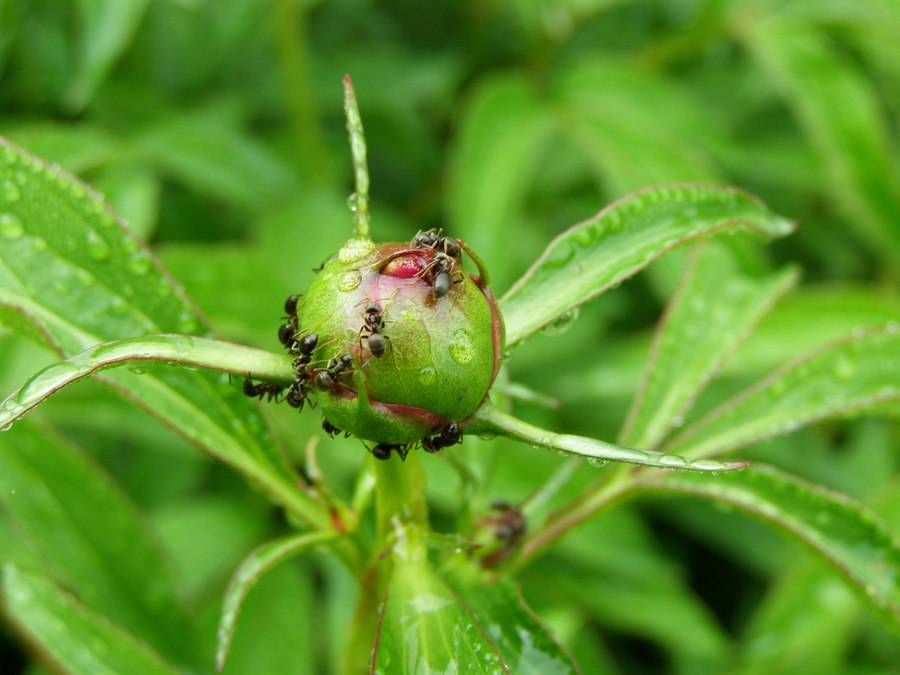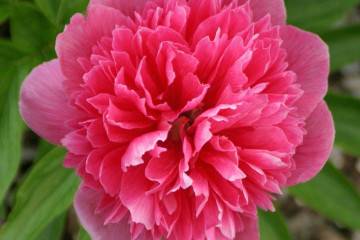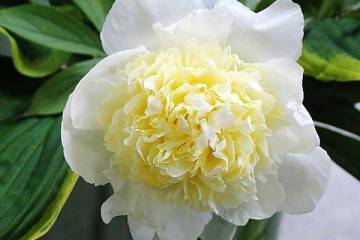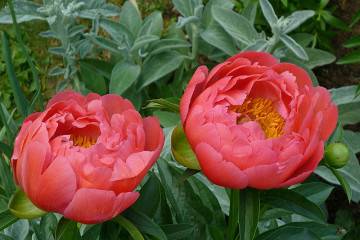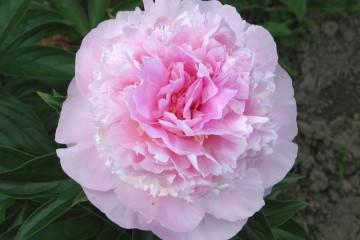Peony Cora Louise (Paeonia Itoh Cora Louise)
Content:
Peony Cora Louise belongs to the hybrid group of ITO-peonies, which, in principle, stand out against the background of all other representatives of their kind. This variety is considered the most original among fellows due to the ratio of flower shades to leaves.
Peony Ito Cora Louise (Paeonia Itoh Cora Louise) - what is this variety
Peony Cora Luis belongs to the ITOH-paeonia group, work on which began recently, around the middle of the twentieth century. The whole group represents different varieties of hybrid peonies, which are obtained by crossing herbaceous and woody varieties. ITO-hybrid Cora Louise is a peony that looks unusual against the background of other representatives of the group.
Brief description and characteristics
Botanical description of the plant:
- life form - shrub, the maximum height of which is 1 m;
- shoots are thick, strong and erect, densely covered with leaves;
- leaves are openwork, showy, dark green;
- semi-double flowers, which is typical for all ITHO-hybrid, they are very large, up to 25 cm in diameter;
- the color is two-tone, very original: the main part of the petals is pink-white or slightly beige, and the base is pale purple. The brightness of the core is especially emphasized by the yellow stamens;
- inflorescences bloom wide enough so that you can fully see all their splendor;
- unlike many ITO peonies, which do not smell at all, this variety emits a weak but very pleasant aroma;
- has a visual resemblance to a mountain peony.
Advantages and disadvantages of the variety
| Advantages of the variety | Disadvantages of the variety |
| high decorativeness | high price |
| immunity to disease | short flowering |
| suitable for cutting | weak aroma |
| tolerate temperature changes well | |
| frost resistance |
Use in landscape design
Cora Lewis is perfect for both landscaping and cutting. It is used in both solitary and group plantings. The plant retains a high decorative effect even at the end of the flowering period until autumn. The flower looks great surrounded by low-growing flowers of a light, preferably white color. It can be daisies, white tansy, stellate, etc. Thuja, juniper and other evergreens will perfectly emphasize its magnificence.
Growing a flower: how to plant it in open ground
Planting a flower in open ground does not cause many problems, it is enough to follow a number of simple rules, and everything will work out. Even beginners in floriculture will be able to grow representatives of the ITO-peonies group.
Planting by root cuttings
Root cuttings can be removed from the mature plant at the end of the flowering period. The optimal time is mid-August. This procedure is carried out as follows:
- The rhizome of an adult peony is removed from the ground, excess soil is gently shaken off from it and damaged and rotten roots are removed.
- The rhizome is divided into a maximum number of small parts of 1-3 cm, each of which must have 1 root and 1 root bud.
- Cuttings are soaked for 1 hour in a solution of potassium permanganate or disinfectant.
- Then the pieces of rhizome are rolled in crushed charcoal and left overnight until a small crust is formed.
- Cuttings are planted in loose nutrient soil at a distance of 20 cm from each other.
In the future, caring for future plants consists in covering in hot weather, timely watering, weeding. Transplantation to a permanent place is made only after 1-2 years. And flowering will have to wait even longer.
Seat selection
ITO-hybrid peonies grow better on fertile loamy soils. The plant will not like peat soils, since such soil will be too acidic for it. The landing site should be free of drafts, protected from gusts of wind. You can not choose very sunny areas, but you can not plant in the shade either.
How to prepare the soil and flower for planting
A month before planting, a planting hole is dug, the soil is well dug, expanded clay or crushed stone, humus, coarse river sand and compost are introduced into it. You can also add mineral complex fertilizers for flowering garden plants. The root system of the seedling should be inspected for damage and dried roots. Too long should be shortened. You can briefly hold the bush in the root, epine or other similar means. No additional processing is required before planting.
Planting procedure step by step
Step-by-step planting of peonies Cora Louise:
- A landing pit 60 × 60 × 80 cm is being prepared.
- The holes are filled with a mixture of sand, gravel, compost, humus. Potash fertilizers and ash can be added as additional dressings.
- The pit is filled with prepared soil mixture and left for about a month so that the earth is well compacted.
- After this time, peonies are not planted too deeply in the hole.
- The soil is compacted and thoroughly watered.
Seed planting
Seed planting is not recommended. It is only possible if it is produced by a breeder who wishes to develop a new variety. This is due to the fact that the Cora Luis peony is a hybrid, which means that the properties of the mother plant will not be transferred to the daughter plant.
Plant care
It is not difficult to take care of the plant, it is enough to follow the simple rules that are required for each plant. The flower, of course, is not suitable for those who cannot devote enough time to their summer cottage. Care requires regular watering, timely fertilization, mulching and loosening the soil.
Watering and feeding
Watering should be carried out quite often and only with warm, settled soft water. Its amount should not be too large, since flowers do not like overflow. The first feeding with complex mineral fertilizers is done in spring, at the very beginning of the growing season.
Mulching and loosening
After each watering, it is recommended to spud the flower, this will have a beneficial effect on the internal and external state of the plant. Mulching with natural materials is also useful, which will reduce the evaporation of liquid from the soil surface.
Preventive treatment
Despite the fact that ITO peonies have a fairly high immunity, in the spring they can be sprayed with insecticides in order to prevent the appearance of pests. Treatment with fungicides will help prevent the appearance of diseases. It is also important before winter, after the pruning procedure, to loosen the soil, to clear it of dry leaves.
Peony Blossom Cora Luis
The flowering of the peony of this variety is amazing. Thanks to the original, two-tone color, it is simply impossible to look away from it.
A period of activity and rest
Flowering occurs at the end of May and lasts about a month.
Care during and after flowering
During flowering, you can feed the flower with potassium-phosphorus or organic fertilizers. The most important thing is to cut off the wilted buds in time.
What to do if it does not bloom
If the plant is not flowering, it may have been planted incorrectly, such as in the shade or with high flowing groundwater. It is also possible that it is not protected from drafts. In this case, you should do a peony transplant. If it doesn't bloom for the first year after planting, there is nothing to worry about, this is normal.
Peonies after flowering
After flowering, the flowers do not require maintenance. It is necessary to cut off wilted inflorescences from Cora Louise and admire their lush greenery before the fall frosts.
Transfer
A transplant is required as needed, or once every 4-5 years. If there is no need to divide the root, then the flower is transplanted by the transshipment method.
Preparing for winter
This variety can withstand frosts down to -30 ° C, so shelter is not required in most regions. If there is a likelihood of more severe frosts, especially in the absence of snow cover, it is necessary to cover the peony with spruce paws or a special garden shelter.
Diseases, pests and ways to control them
ITO-pions have immunity to most diseases. They can also sometimes be attacked by insects. In the first case, insecticides are used, in the second, fungicides. These substances are sold in every flower shop.
Peony Cora Louise is an excellent representative of the ITO-peonies group. The flower stands out against the background of others for its unusual color and pleasant aroma. The plant is unpretentious, so even a novice florist can grow it.
